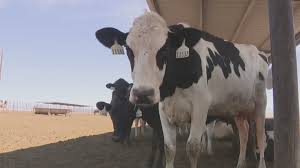The recent diagnosis of bird flu in a person in Texas, believed to be linked to contact with infected cows, has raised concerns about the potential for cross-species transmission and the implications for public health. This article explores the unique aspects of this case, the current state of knowledge regarding bird flu transmission, and the measures being taken to mitigate the risk to the public.
Understanding the Texas Case: The diagnosis of bird flu in a person in Texas represents the first known instance globally of this particular strain of avian influenza being transmitted from a mammal to a human. The infected individual reportedly had contact with cows that were presumed to be infected with the virus. While the patient exhibited only mild symptoms, such as eye redness, the case has prompted heightened surveillance and monitoring efforts by health authorities.
Cross-Species Transmission: The transmission of bird flu from animals to humans, known as zoonotic transmission, is not uncommon. However, most cases involve direct contact with infected birds, particularly poultry. The Texas case presents a unique scenario in which the virus appears to have been transmitted from dairy cows to a human. This raises questions about the potential for broader transmission within mammalian species and underscores the importance of vigilance in monitoring for such events.
Public Health Response: Health officials have emphasized that the risk to the public remains low, as there is no evidence of person-to-person spread or transmission through consumption of dairy products or meat from infected livestock. The infected individual is being treated with antiviral medication, and efforts are underway to trace and monitor individuals who may have been in contact with the patient. Additionally, heightened surveillance measures are being implemented to detect any further cases of bird flu in both animals and humans.
Implications for Agriculture and Food Safety: The detection of bird flu in livestock poses challenges for the agricultural industry and food safety authorities. In addition to potential economic impacts on dairy and livestock producers, there are concerns about the safety of dairy products and meat from infected animals. While there is currently no evidence of transmission through consumption, regulatory agencies are closely monitoring the situation and implementing measures to ensure the safety of the food supply.
Research and Preparedness Efforts: The Texas case underscores the importance of ongoing research and preparedness efforts to address emerging infectious diseases. Scientists are working to better understand the dynamics of bird flu transmission, including potential genetic mutations that may affect its spread and virulence. Additionally, public health agencies are enhancing surveillance systems and response capabilities to effectively manage outbreaks and protect public health.
The diagnosis of bird flu in a person in Texas highlights the complex nature of infectious disease transmission and the challenges of preventing cross-species spread. While the case raises concerns about the potential for zoonotic transmission from livestock to humans, public health authorities are taking proactive measures to mitigate the risk and ensure the safety of the population. Continued vigilance, research, and preparedness efforts are essential to address emerging infectious threats and safeguard public health.
